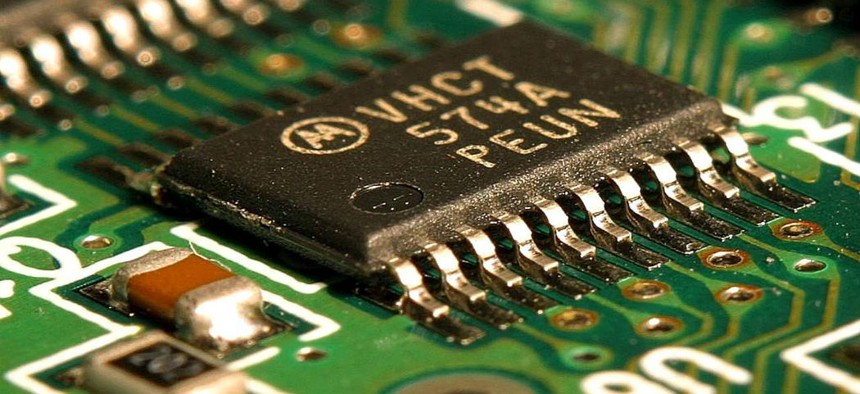DARPA looks beyond Moore's Law
Chip effort targets reconfigurable devices as scaling runs out of steam.
With the chip scaling framework known as Moore's Law clearly running out of steam, the Defense Advanced Research Projects Agency (DARPA) is attempting to reinvigorate and leverage a vibrant domestic chip sector with a $200 million initiative designed to push the boundaries of chip architectures such as graphics processors.
DARPA recently announced that its Electronics Resurgence Initiative seeks to move beyond Moore's Law chip scaling. Among the new fronts to be opened by the defense agency are extending GPU frameworks that underlie machine-learning tools to develop "reconfigurable physical structures that adjust to the needs of the software they support."
The chip initiative overseen by DARPA's Microsystems Technology Office will also attempt to lay the groundwork for a post-Moore's Law era where, according to the agency, research will focus on "integrating different semiconductor materials on individual chips, 'sticky logic' devices that combine processing and memory functions and vertical rather than only planar integration of microsystem components."
As the focus of chip technology zeroes in on data driven applications, DARPA said it would cast a wider net to harness semiconductor innovation that would lead to a post-Moore's Law generation of microelectronic systems benefitting military and commercial users.
The effort runs in parallel with recent attempts by DoD to tap into the sustained burst of technology and development innovation in Silicon Valley.
"We need to break away from tradition and embrace the kinds of innovations that the new initiative is all about," emphasized William Chappell, director of DARPA’s Microsystems Technology Office. The program will "embrace progress through circuit specialization and [will] wrangle the complexity of the next phase of advances, which will have broad implications on both commercial and national defense interests," Chappell added.
The chip research effort will complement the recently created Joint University Microelectronics Program (JUMP), a research effort in basic electronics being co-funded by DARPA and Semiconductor Research Corporation (SRC), an industry consortium based in Durham, N.C. Among the chip makers contributing to JUMP are IBM, Intel Corp., Micron Technology and Taiwan Semiconductor Manufacturing Co. Micron Technology served as a sole domestic source of memory technology for the military as much of the chip industry moved to Asia beginning in the 1990s.
SRC members and DARPA are expected to kick in more than $150 million for the five-year project. Focus areas include high-frequency sensor networks, distributed and cognitive computing along with intelligent memory and storage.
As DARPA continues to invest in device technology, it is also attempting to leverage what Chappell calls the "software-defined world." The agency sees virtualization and other software technologies as one way of addressing skyrocketing weapons costs. As a result, the agency is also investing more research funding in areas such as algorithm development and circuit design for applications such as dynamic spectrum sharing, a capability that would allow the military to squeeze more capacity out of crowded electromagnetic spectrum.
DARPA's chip restart effort augments similar electronics efforts such as a graph analytics processor initiative that is designed to come up with new chip architectures that can crunch big data from sensors along with video files.
NEXT STORY: Navy sailors get 19 official mobile apps




